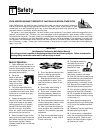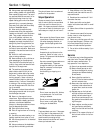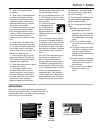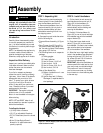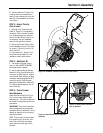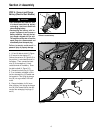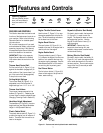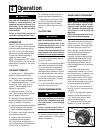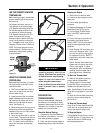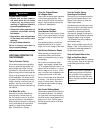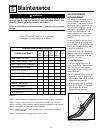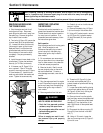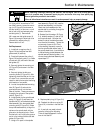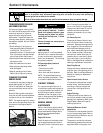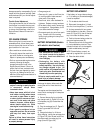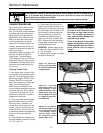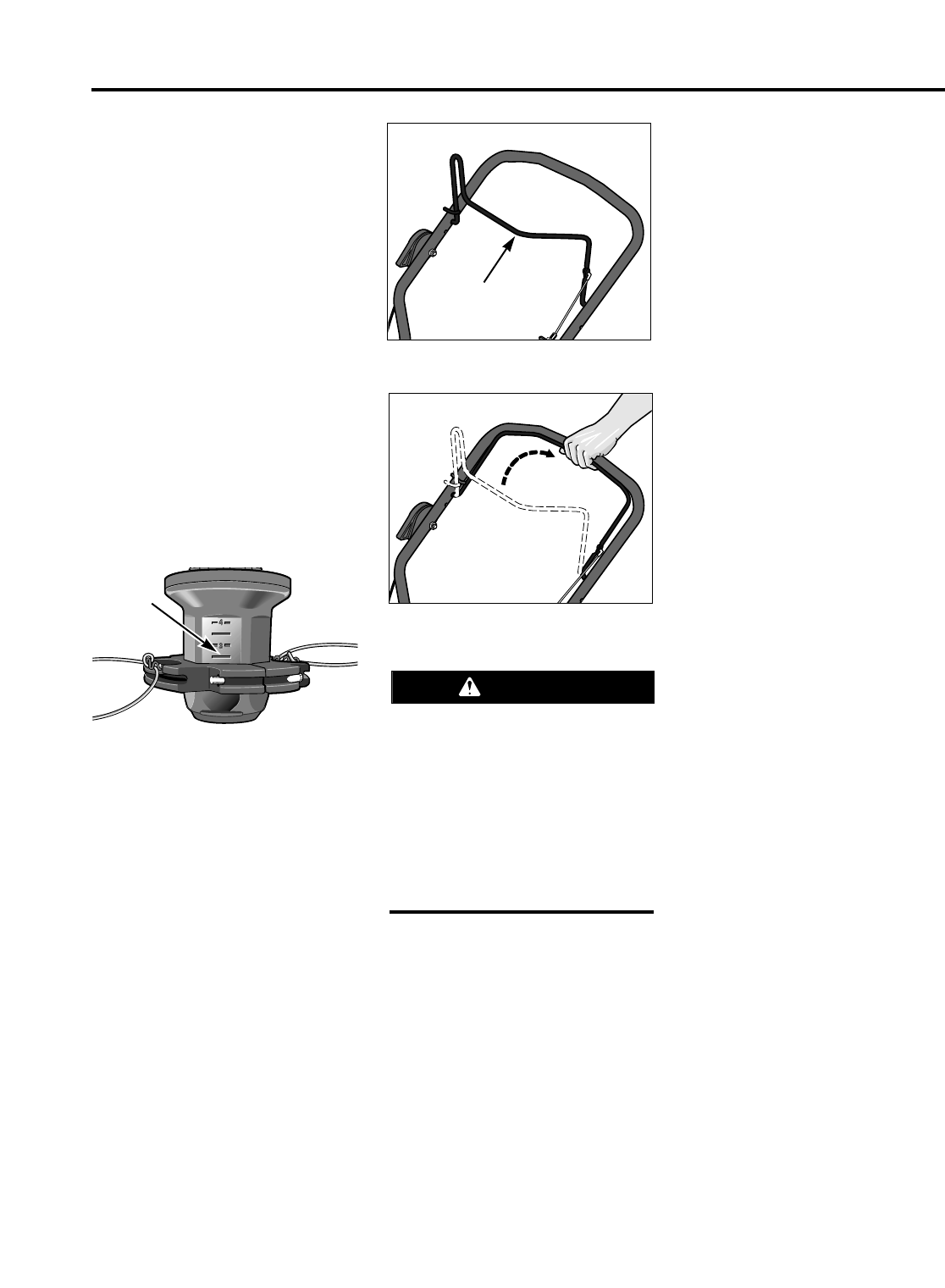
9
Section 4: Operation
USE THE CORRECT DIAMETER
TRIMMER LINE
Before starting a project, examine the
grass or material you will be cutting
and trimming.
For tougher conditions, use two (or
four) sections of the thicker gauge,
.155" diameter extra-heavy duty line.
For less demanding conditions, use
two sections of the thinner gauge,
.130" diameter heavy-duty line. The
thicker line has the heft to chop
through tougher materials, while the
thinner line provides a more precise
cut. To change trimmer lines, refer to
Changing Trimmer Lines in Section 5.
NOTE: The thinner gauge line is also
recommended for use near trees or or-
namentals to help prevent girdling
(cutting the bark).
USING THE TRIMMER HEAD
CONTROL BAIL
Before starting the engine, it is essen-
tial to know how to use the Trimmer
Head Control Bail.
1. The Trimmer Head Control Bail (A,
Figure 4-3) is used to start and stop
trimmer head motion.
2. Leave the control bail in the disen-
gaged (released) position when start-
ing the engine to prevent the trimmer
head from turning when the engine
starts. See Figure 4-3.
3. When the engine is running, pull up
and hold the control bail against the
handlebar (Figure 4-4) to start rotation
of the trimmer head.
4. Let go of the control bail to stop the
trimmer head. The control bail should
spring forward to the disengaged posi-
tion. If it doesn’t, do not use the ma-
chine until the control bail has been
repaired.
OPERATING THE
TRIMMER/MOWER
Once you have read and understood
the sections in this Manual on Safety,
Assembly, Features and Controls, and
Operation, you are ready to start and
operate your trimmer/mower.
Checklist Before Starting
1. Complete the Pre-Start Checklist in
this Section of the Manual. You must
wear safety glasses or goggles.
2. Check that the line cutting height is
adjusted according to the instructions.
Starting the Engine
1. Move the unit to the work area.
2. Connect the spark plug wire to the
spark plug.
3. Put on safety-approved eye
protection.
4. Release (disengage) the Trimmer
Head Control Bail (A, Figure 4-3).
5. Put the Engine Throttle Control
Lever in the FAST (rabbit symbol)
position.
6. Push in the fuel primer button as
instructed in the Engine Owner’s
Manual. NOTE: Do not use primer to
restart a warm engine after a short
shutdown.
7. Recoil Starting: Pull recoil start rope
slowly until resistance is felt. Then
pull rope out rapidly to start engine.
Let rope back in slowly. NOTE: If
engine fails to start after three pulls,
repeat step 6.
Electric Starting: Stand behind han-
dlebars and turn ignition key clock-
wise to crank engine. If engine
does not start after five seconds of
cranking, stop and repeat step 6.
When engine starts, release key.
To Start the Trimmer Head
1. Stand in the operator’s position
directly behind the handlebars.
2. Slowly close the Trimmer Head
Control Bail (Figure 4-4) against the
handlebars to activate the trimmer
head. Use the Engine Throttle Lever to
adjust the turning speed of the trimmer
head.
3. Once the trimmer head is revolving,
push the trimmer/mower along the
path to be cut.
To Stop the Trimmer Head
Let go of the Trimmer Head Control Bail.
It will return to its open position and
the trimmer head will stop turning.
To Stop the Engine
Put the Engine Throttle Control Lever in
the STOP position. (If time allows, first
move throttle lever to SLOW setting
before stopping engine.)
Figure 4-2
Height
Guide
Figure 4-3: Control bail disengaged.
A
Figure 4-4: Control bail engaged.
If the trimmer head control bail is not
operating properly, shut off the
engine, disconnect the spark plug
wire and move wire away from plug.
Adjust or repair the control bail
before using the trimmer/mower.
Failure to follow this instruction could
result in personal injury or property
damage.
WARNING



